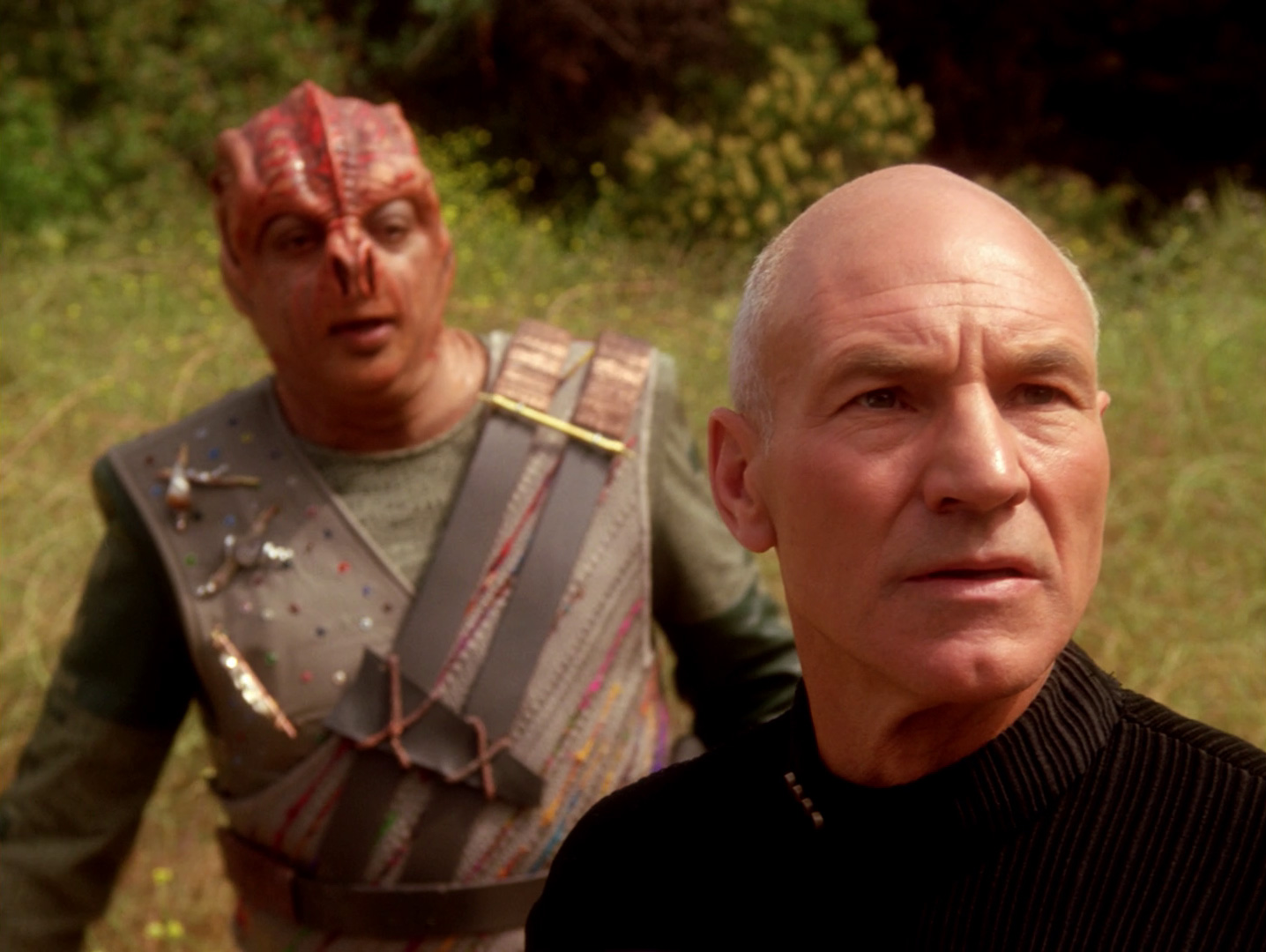This module discusses cognitive linguistics and the link/relationship language has to the mind, body, and communication. Language is not only verbal but can be communicated and understood through the body, such as sign language, communicating with the hands, or behavioral and emotional cues shown with the whole body like tenseness if uncomfortable, tears if sad, or doubled over if in pain. Communication and language can also be understood from text like words in a book or braille; for the visually impaired. We learn how language is spoken and understood through two science fiction works, the movie Arrival and the television show Star Trek: The Next Generation, “Darmok.”

In the movie Arrival, a linguist professor, Louise Banks, is in the process of teaching a class when the news about the 12 objects that arrived on earth is reported. These objects, it turns out, are spaceships that carry alien beings. The professor is drafted by the army to learn to communicate with the beings to prevent destruction and war. These 12 unidentified flying objects are placed sporadically throughout the world, yet, different cultures with different languages all cognitively understand the significance of these appearances, and everyone is fearful or worried. The aliens in this movie do not speak any verbal earthly or alien language and cannot or will not assimilate into any sort. However, Louise decides they might understand better if she wrote the language rather than spoke it, and she has success. Louise writes humans and aliens respond with a few circle symbols, giving us the understanding they understand. Unlike humans, these beings seem semiotic because they process information in isolation to make sense of the written word. This process is to find a relation between their language and the human language, so they (aliens) can respond. Context cognitive linguistics is how we understand or have shared meaning; however, for these creatures, that is not the case. These aliens imitate Ian and Louise’s bodily actions to connect with them through bodily communication rather than verbal communication. However, they have no meaningful connection or understanding of the action. According to Ian, the alien’s symbols and meaning do not correlate in the movie. Ian also says that, unlike written human language, the symbols convey meaning but do not convey sound. This statement would lead one to believe that the way they might communicate with one another may also lack context cognition and maybe even empathy and emotion.
 “Darmok and Jalad at Tanagra”
“Darmok and Jalad at Tanagra”
“In my experience, communication is a matter of patience and imagination; I would like to believe we have these qualities in sufficient measure.” – Captain Picard.
In the Star Trek: The Next Generation, episode “Darmok,” Captain Picard and the Tamarian captain have been beamed down and stranded on a planet. Neither crew can rescue their respective captains, and like in previous encounters with the Tamarians and other federation ships, there is a communication barrier with no one understanding the other. Unfortunately, the language barrier creates some static between the captains. Still, as the night turns to the day, they begin to pick up physical clues from each other as both captains realize they have an enemy they must fight together. However, from the Tamarian captain’s initial response and the demand for a second knife, he knew of the danger on this planet, a danger he tried to warn Captain Picard about. As they stand against this enemy, Captain Picard realizes that the Tamarians speak in metaphor. In this module, we learn that metaphor is one of the primary ways we understand the world. These metaphors are anchored in our physical and cultural experiences, like the Tamarians and how they communicate. The Tamarians use visualization and situations from their culture and history to communicate what is occurring in the present. From the conversation between Picard and the Tamarian captain, it seems he is speaking in ego-moving metaphors rather than time-moving metaphors.
Both of these works were very entertaining and embodied (see what I did there) the point and lesson of this module. They proved that two people or two beings do not have to speak the same language to understand each other. Language can be conveyed through bodily context, metaphors, or symbols. Other ways of commuting do not include verbal linguistics or even the standard ways of verbally communicating.
Before I end, I want to say that Arrival, the movie reminds me of Independence Day because UFOs appeared in many locations worldwide without warning. In the scene where Captain Hiller (Will Smith) takes the alien that he knocked out to area 51, the scientist’s body is inhabited. The alien tells the president and those around cognitively through the scientist that they did not want peace, only destruction, and then this alien enters the president’s mind, and the president sees the destruction that takes place from planet to planet, with earth being next. This example is not really about this module it is more along the line with module 2 and the embedded cognition, but the aliens did not verbally communicate with one another they communicated telepathically and through signals; however, to communicate directly with the president, he used the cognitive linguistics of another human being.












 “Darmok and Jalad at Tanagra”
“Darmok and Jalad at Tanagra”














